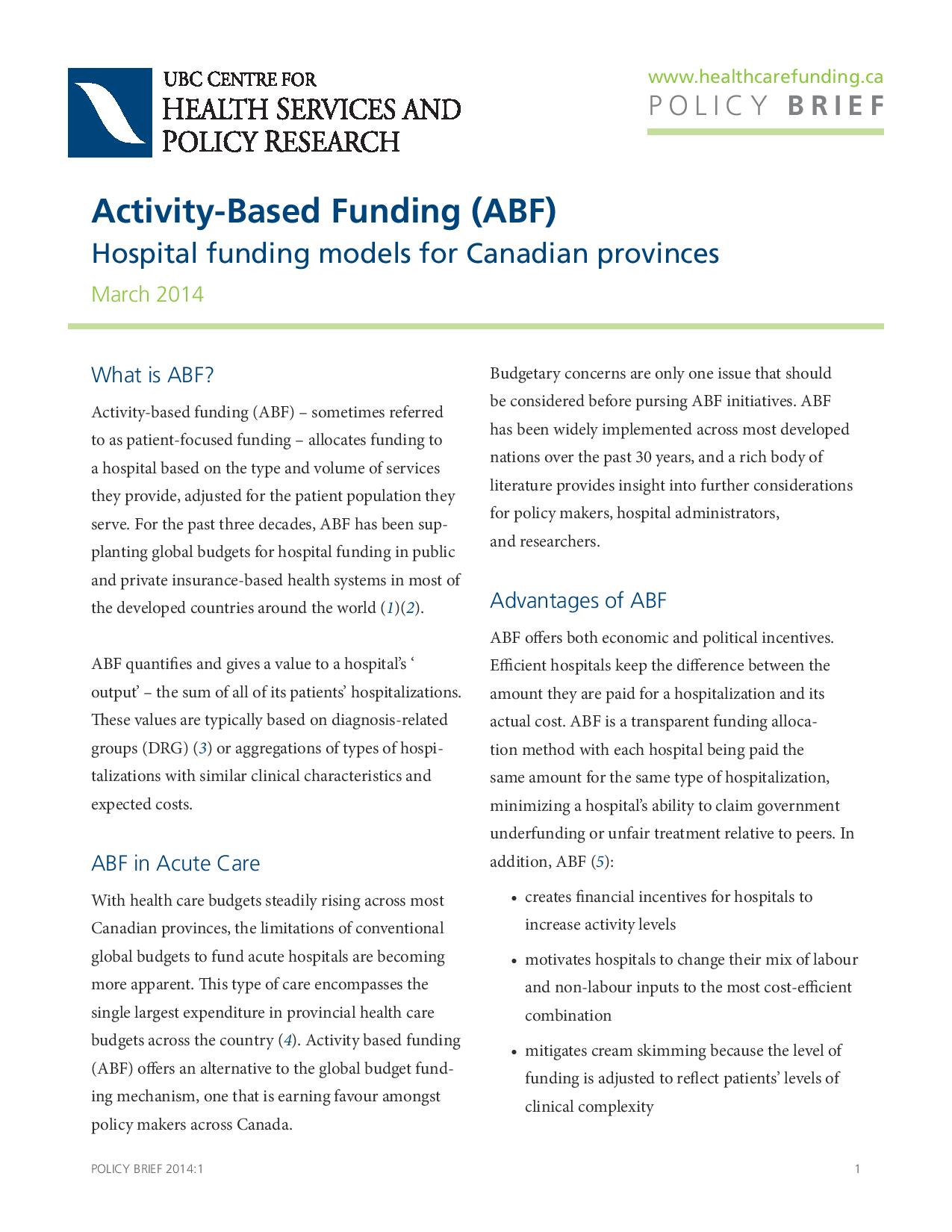Activity-based funding (ABF) is a method of funding healthcare where providers are allocated funds based on the type and volume of services they provide, and the complexity of the patient population they serve. ABF has become the international norm for funding hospital-based care, and is referred to by many terms, such as patient-focused funding, service-based funding, case-mix funding or payment by results (Sutherland & Repin, 2012). Under ABF, a hospital’s revenue is linked to its activity and patients are thus a source of potential income. Hospitals that can increase their volume of services can benefit from increased revenue; however, volume increases are only possible if there is unused capacity or if additional capacity is generated by improving efficiency, or by discharging patients to other care settings.
The most common policy objectives for the implementation of ABF are to create incentives for increasing productivity, efficiency and to improve transparency in funding (Sutherland & Repin, 2012, Busse, Geissler, Quentin, & Wiley, 2011). Under ABF, all hospitals are paid the same amount for each hospitalization type. ABF quantifies hospital outputs by use of classification systems; one of the original methods being diagnosis-related groups (DRG) (Moreno-Serra & Wagstaff, 2010). Each DRG represents clinically comparable hospitalizations with similar expected costs, and ABF pays hospitals based on the value associated with the assigned DRG (Sutherland & Repin, 2012). ABF has also been used to address specific policy objectives, such as reducing wait lists, increasing hospital quality, encouraging competition among hospitals and enhancing the monitoring of hospital activity.
Disadvantages of ABF include (Cohen, McGregor, Ivanova, & Kinkaid, 2012):
- increases in overall hospital spending due to increases in volume
- creation of incentives for provision of unnecessary care
- requirement for intensive data and reporting information which may not be readily available and is costly to implement
- difficulties determining the appropriate funding amount for hospital care
ABF has been adopted by most developed countries over the past 30 years. According to the large body of literature on this subject, ABF is most suitable for acute services where patients’ episodes of care are fairly easy to observe (Street, Vitikainen, Bjorvatn, & Hvenengaard, 2007, Ettelt & Nolte, 2010). Some services areas, such as intensive care and mental healthcare have been identified as difficult to manage with ABF due to their intensive levels of care and higher costs, although many countries are still experimenting with funding these services through ABF. In addition, ABF may not be appropriate for specialty hospitals that handle very complex patients, where the costs per patient are often much higher than the average hospital. Smaller, rural hospitals may face unique challenges with ABF such as (Li, Ward, & Schneider, 2009, Lawler, Doeksen, & Schott, 2003):
- higher cost burden for implementation of the infrastructure needed to collect and report data
- the prices set for each DRG may not reflect costs in smaller hospitals
- difficulties increasing volume (and thus revenue) since rural hospitals tend to have more chronic patients, and those with less access to post-acute healthcare

